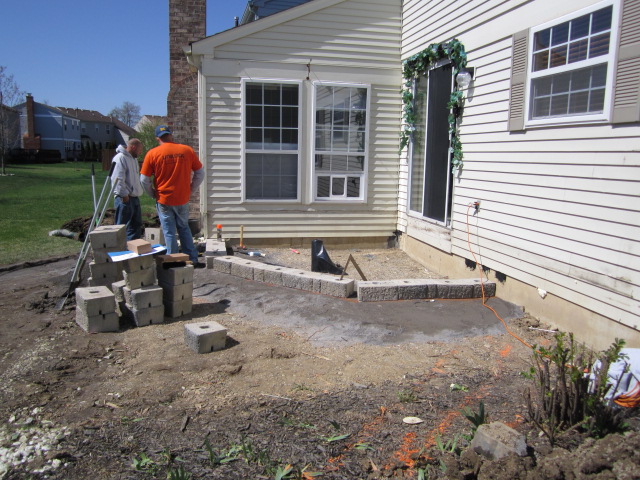High Density Concrete Paving Stones were developed to achieve proper Interlock
Brick pavers made from high density concrete have been a popular paving option for almost 35 years in the United States.
Pavers were first widely used as walkways or paths. They quickly evolved into functional and aesthetically pleasing patios. As
pavers have matured in the market place, the use of residential driveways and municipal city scapes & parks have grown exponentially.

Today, I am still amazed how many homeowners and even contractors, do not understand how
interlocking brick pavers work. Often I go on estimates where homeowners do not believe they actually have
interlocking brick pavers, when in fact they do.
Most homeowners believe that the only
interlocking brick paver is the one that are key shaped or has several angled sides. They believe that they lock together like a jig saw puzzle piece. The most popular shape for
brick paver installations is the traditional 4" by 8" rectangle shape. Laid in a herringbone pattern offers the best performing interlock or lock-up.
The simple truth is that the
"Interlocking"of brick pavers is achieved by the method they are installed. Below is a definition of
"Interlock" described by the
Intelocking Concrete Pavement Institute (ICPI):
"Frictional forces between paving units that prevent them from rotating, or moving horizontally or vertically in relation to each other, also defined as the inability of a concrete paver to move independently of it neighbors. The friction forces enable load transfer among the paving units."
"The three kinds of load transfer are vertical interlock, horizontal interlock, and rotational interlock. Vertical interlock is achieved by shear transfer of loads to surrounding units through sand in the joints. Horizontal interlock is primarily achieved through the use of laying patterns that disperse forces from braking and accelerating vehicles. Rotational interlock is maintained by the pavers being of sufficient thickness & density, placed closely together, and being restrained by a stationary edge restraint on the borders."
To achieve the above
interlock or lock-up needed for a high performing
paving stone pavement, the method of installing
brick pavers is essential. It is the installation process that achieves
interlock. Without boring you with all the minor installation details, below explains how we accomplish the three
"Interlock" load transfers with
brick pavers.
First you install a compacted crushed stone base to the proper specifications recommended for the particular paver installation (patio, walk, driveway, etc..). A strong base will aid in
Vertical interlock by transfering "load" back to the paver units. A strong base will keep the paver units from settling or sinking into the ground and allow the paver units to spread the load between them.

Second you install a sand bedding or leveling course by spreading it over the compacted base approx. 1-1.5" thick. You will then "screed" (level) the bedding course with the proper heights & pitch that is needed for the final product. You will then lay the paver units over the bedding course in the design & laying pattern determined. After all cut ins are complete and the edge restraint is installed, joint sand will be swept into the joints.
Then the most important step in installing
brick pavers will be performed. You will run the power plate compactor over the paver units in several passes and angles. Here is where
Horizontal interlock occurs. As the power plate compactor runs over the pavers units, if vibrates several pavers down at the same time. As the paver units are pushed down into the bedding course..."Jet up" or lock-up of the pavers will occur. This locks the
brick pavers horizontally keeping them from shifting side-to-side.
The final step is to finish sweep all the paver joints with more joint sand.
Rotational interlock is accomplished by butting
pavers up to each other, not leaving an excessive gap between each paver unit
s. This will avoid any "rocking" back and forth of an individual paver unit. It is also accomplished in the planning stage of selecting the proper thickness, laying pattern, and density of
pavers. Specifying the proper paver unit , design, & laying pattern for the particular application is essential.
In summary, the shape of your
brick paver unit does not exclude it from the
interlocking brick paver application. The
methods of installation will allow any shape or composition (clay, concrete, rubber, asphalt) of
pavers to
"interlock" into place.



















































